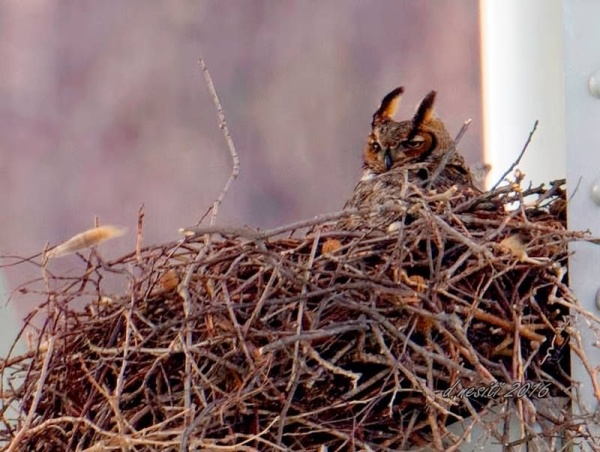
Great horned owls are the first native bird(*) to lay eggs every year. During the Second Breeding Bird Atlas their nests were found with eggs as early as January 22. This is earlier than any other raptor including bald eagles.
Look around your neighborhood. Listen for hooting at night. (audio below of hooting great horned owl (Bubo virginianus), Xeno-canto #XC344952 by Ted Floyd)
There are more great horned owls than we ever suspect.
On Throw Back Thursday, read more about the owl who is First to Nest.
p.s. (*) Who is actually the first to lay eggs in Pennsylvania every year? Feral rock pigeons!
The Second Breeding Bird Atlas reported their nests with eggs as early as January 9. Birds of North America online explains:
“Winter breeding is possible because adults feed crop milk or seeds, and are independent of other animal populations for high-protein, high-fat diets for squabs. … Bright, sunny weather following a Canadian cold front is characteristic stimulus for courting, copulating, and egg laying in midwinter, independent of temperature.”
So now you have a second nest to look for.

(photo credits: owl by Dana Nesiti, pigeons by Chuck Tague)
I thought owls were cavity nesters. I always see pictures of them looking out of a hole in a tree.
Peggy, difference species have different nesting strategies. Snowy owls nest on the arctic tundra, great-horned owls appropriate others’ stick nests, burrowing owls nest in holes, and screech-owls are cavity nesters … to name a few.
I always enjoy your daily blog and the accompanying photos. This info on owls is great. Yesterday Jan 17, 2018, The Denver Post had an interesting and informative article on this year’s snowy owl irruption your readers would find very interesting.
We were thrilled to have a GHO hooting in our backyard two nights ago in Scott Township. There was enough moonlight to see his white throat and stripes. We just have a thin strip of woods behind the house, but red-tails have nested there before. Fingers crossed.
Loving the recent owl posts Kate!
I actually have a nesting pair in my back yard in the Banksville section of the city. I love listening to them.